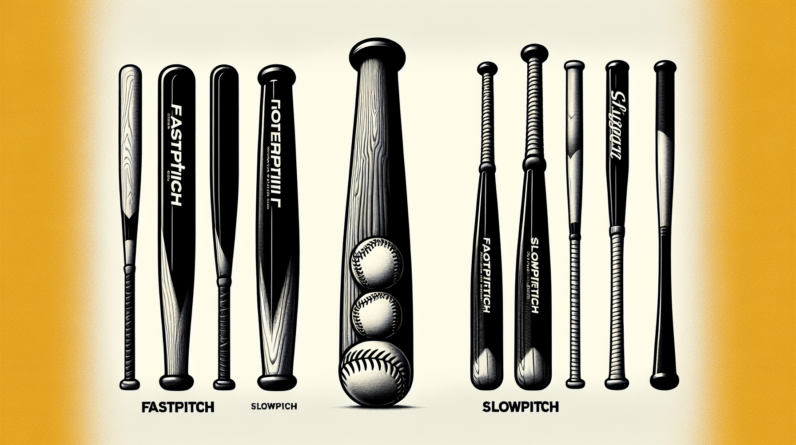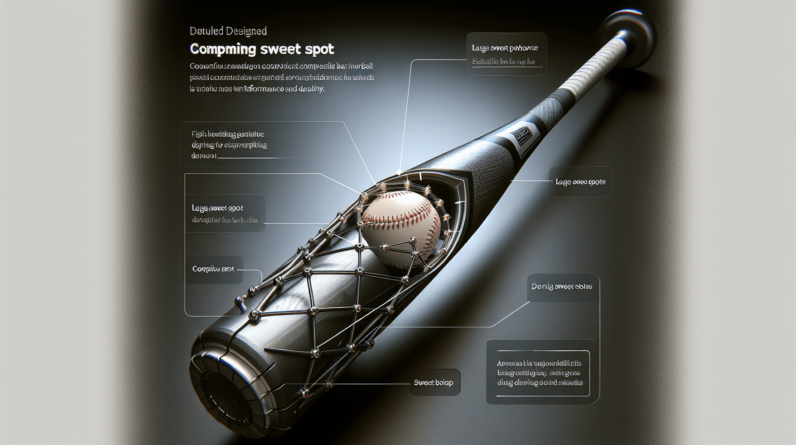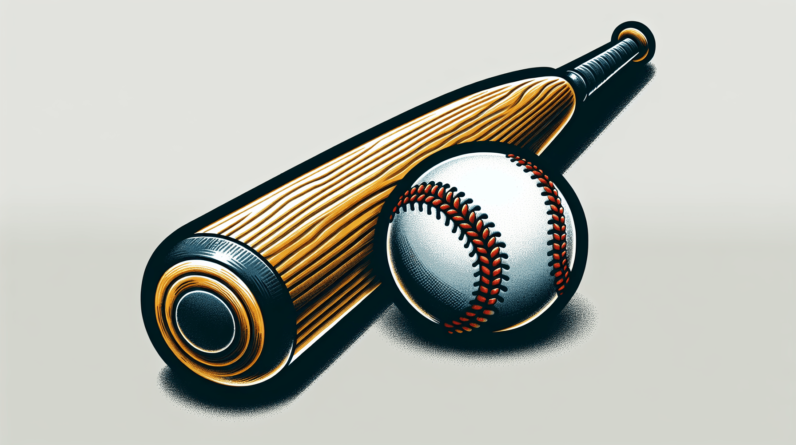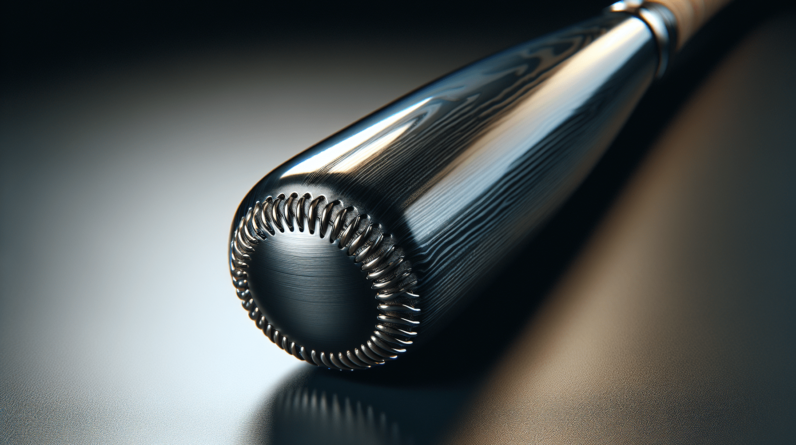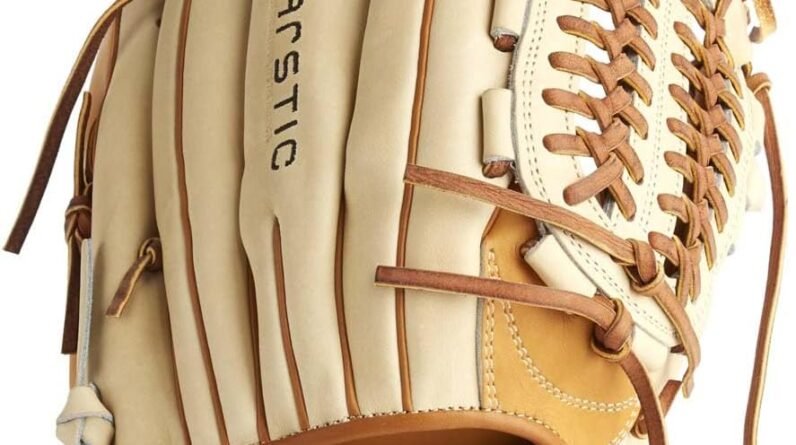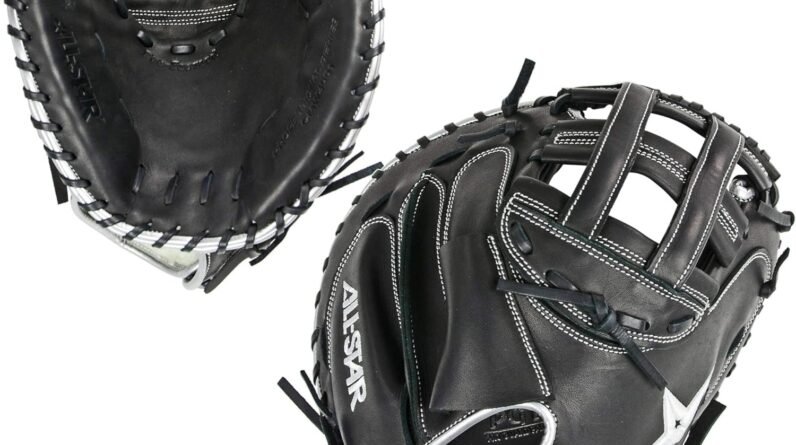You may have heard the term “drop 10” when it comes to softball bats, but what does it actually mean? In the world of softball, the drop 10 refers to the length to weight ratio of a bat. Simply put, it signifies the difference between the length of the bat in inches and the weight of the bat in ounces. Understanding what drop 10 means is essential for softball players, as it determines the bat’s balance and swing weight. So, let’s dig deeper into this concept and uncover the significance of drop 10 in the realm of softball bats.
Understanding the Drop
Defining the Drop
The “drop” of a softball bat refers to the difference between the length of the bat and its weight. It is denoted by a negative number and represents the bat’s weight-to-length ratio. For example, a bat with a drop of 10 means that if the bat is 34 inches long, it will weigh 24 ounces. The drop is essential in determining the ease of swinging the bat and the power it can generate.
Why is the Drop Important?
Understanding and considering the drop of a softball bat is crucial because it directly affects the player’s swing speed, power, and overall performance. Bats with higher drops are generally lighter and easier to swing, allowing players to generate more bat speed. On the other hand, bats with lower drops are heavier and offer more power, but can be more challenging to swing for some players. Finding the right drop that suits your playing style and physical abilities is vital to maximize your performance on the field.
Calculating the Drop
To calculate the drop of a softball bat, you need to subtract the weight of the bat from its length. For example, if a bat is 29 inches long and weighs 19 ounces, the drop would be 10 (-10). The formula for calculating the drop is:
Drop = Length (in inches) – Weight (in ounces)
By understanding the drop calculation, you can effectively compare and choose the right bat that meets your requirements and preferences.
Exploring the Drop 10
What Does Drop 10 Refer to?
When referring to a “Drop 10” softball bat, it means that the weight of the bat is 10 ounces lighter than its length. For instance, if the bat is 32 inches long, it will weigh 22 ounces. A Drop 10 bat is a popular choice among players, especially those transitioning from youth leagues to higher levels, as it offers a balance between bat speed and power.
Implications of a Drop 10 Bat
Opting for a Drop 10 bat has several implications for the player. Firstly, it allows for increased bat speed, enabling you to generate more power through your swing. This can result in improved contact with the ball and increased chances of hitting the ball farther. Secondly, a Drop 10 bat is generally easier to control and maneuver, providing players with more confidence at the plate. Lastly, using a Drop 10 bat can help players adjust to higher-level competition, as it strikes a balance between power and swing speed.
Advantages of a Drop 10 Bat
One of the significant advantages of using a Drop 10 bat is that it enhances bat speed. The lighter weight allows for quicker swing movements, increasing the chances of making solid contact with the ball. Additionally, the increased bat speed can lead to improved power, allowing players to hit the ball farther and potentially clear the outfield fence. The balance between bat speed and power in a Drop 10 bat offers players the best of both worlds, making it a popular choice among many softball players.
Considerations for Using a Drop 10 Bat
While a Drop 10 bat offers numerous advantages, it is essential to consider a few factors before making your decision. Firstly, players with more strength and power may opt for a bat with a lower drop, as it can provide additional power through the swing. Conversely, players with average strength or seeking more bat speed may prefer a bat with a higher drop. Additionally, it is crucial to note that players must feel comfortable and confident while using a Drop 10 bat, as the optimal bat choice varies from player to player.
Factors Affecting Bat Performance
Material and Construction
The material and construction of a softball bat play a significant role in its overall performance. Bats are commonly made from materials such as alloy, composite, or a combination of both. Alloy bats are known for their durability and relatively lower cost, while composite bats offer enhanced performance and larger sweet spots. The construction of the bat, such as one-piece or two-piece design, also affects factors like swing weight and vibration. It is essential to consider the material and construction as they impact the bat’s performance and longevity.
Barrel Size and Length
The barrel size and length of a softball bat determine the area on the bat that can make contact with the ball. A larger barrel size generally results in a larger sweet spot, providing more room for solid contact and increasing the chances of hitting the ball with power. Additionally, a longer bat allows for more reach, which can help players cover a larger area when swinging. However, it is crucial to find the right balance between barrel size and length that suits your swing mechanics and playing style.
Weight Distribution
The weight distribution of a softball bat refers to how the weight is distributed along the bat’s length. Bats can be categorized as either balanced or end-loaded. Balanced bats have an equal distribution of weight throughout the bat, making them easier to swing and control. End-loaded bats have more weight concentrated towards the end, providing more power but may require additional strength to swing effectively. Understanding your swing mechanics and personal preferences will help determine the ideal weight distribution for your bat.
Player Strength and Style
One of the most significant factors affecting bat performance is the player’s strength and style of play. Players with more physical strength and power may benefit from a bat with a lower drop and more weight, allowing them to generate additional power through their swings. Alternatively, players with average strength or seeking more bat speed may prefer a bat with a higher drop and lighter weight. It is crucial to match your bat’s characteristics to your playing style and physical abilities to optimize your performance on the field.
Choosing the Right Drop for You
Player Age and League Regulations
When choosing the right drop for a softball bat, it is essential to consider the player’s age and the league regulations in which they participate. Different age groups and leagues may have specific rules regarding bat drops and the maximum amount allowed. It is crucial to familiarize yourself with these regulations to ensure compliance and fair play. Younger players may benefit from a higher drop to facilitate bat speed and control, while older players may require a lower drop for increased power.
Player Skill Level and Experience
The player’s skill level and experience also play a role in determining the ideal drop for their bat. Beginners and less experienced players may find it beneficial to start with a higher drop bat to develop proper swing mechanics and bat control. As players progress and gain more experience, they may choose to transition to a lower drop bat for increased power and performance. The right drop should align with the player’s skill level, allowing them to maximize their abilities while continuously improving their skills.
Player Physical Abilities and Preferences
Each player has unique physical abilities and preferences that need to be taken into account when selecting the right drop for a softball bat. Factors such as strength, size, and comfort level all contribute to the optimal bat choice. Players with more strength may prefer a bat with a lower drop to maximize power, whereas players who prioritize bat speed may opt for a higher drop. Additionally, considering the player’s comfort and confidence with a particular drop is crucial to ensure they can perform at their best on the field.
Coach or Expert Recommendations
Seeking recommendations from coaches or experts in the field of softball can provide valuable insights when choosing the right drop for a bat. Coaches who have experience working with players at various skill levels can offer guidance based on their observations and knowledge of the game. Similarly, experts in the field, such as experienced players or equipment specialists, can provide informed recommendations based on their expertise. Consulting with these professionals can help narrow down the options and find the perfect bat drop for your specific needs.
Understanding Bat Standards
ASA Standards
The Amateur Softball Association (ASA) sets certain standards for softball bats to ensure fair play and maintain the safety of players. ASA-approved bats must meet specific performance criteria, including bat compression limits and acceptable bat drop ranges. It is crucial to check if your bat meets the ASA standards set by the league you are playing in to avoid disqualification or penalties.
USSSA Standards
The United States Specialty Sports Association (USSSA) also has its own set of bat standards for softball. USSSA-approved bats must meet performance and safety requirements, with specific regulations regarding bat drop, barrel diameter, and performance testing. Checking if your bat complies with USSSA standards is necessary to ensure eligibility for USSSA-sanctioned games and tournaments.
NSA Standards
The National Softball Association (NSA) has its own bat standards that govern games and tournaments under their jurisdiction. NSA-approved bats are subject to restrictions on bat drop, barrel diameter, and performance testing, similar to other softball governing bodies. It is vital to verify if your bat aligns with the NSA standards in order to participate in NSA-sanctioned events.
ISF Standards
The International Softball Federation (ISF) establishes bat standards for international softball competitions. ISF-approved bats must meet specific criteria, including bat drop and barrel diameter limits, as well as performance testing. If you plan to participate in international softball events, ensuring your bat complies with ISF standards is necessary.
Maintaining and Caring for Your Bat
Proper Storage
Properly storing your softball bat is crucial for maintaining its performance and longevity. Bats should always be stored indoors, away from extreme temperatures and humidity. Avoid leaving your bat in a hot car or exposing it to freezing temperatures, as these conditions can damage the bat’s materials. Additionally, storing your bat horizontally or vertically in a bat holder or rack can help prevent warping or unnecessary stress on the bat.
Cleaning and Maintenance
Regular cleaning and maintenance are essential for keeping your softball bat in optimal condition. After each use, wipe the bat down with a soft cloth or sponge soaked in warm water to remove any dirt or debris. Avoid using harsh chemicals or solvents that may damage the bat’s finish. Additionally, inspect the grip for any signs of wear and consider replacing it if necessary. Properly maintaining your bat will extend its lifespan and ensure consistent performance.
Inspection and Repairs
Regularly inspecting your softball bat for any signs of damage or wear is vital to catch any potential issues early on. Check for cracks, dents, or rattling inside the bat, as these can impact its performance and safety. If you notice any damage, it is advisable to consult a professional for repairs. Attempting to repair a bat yourself may result in further damage or compromise its integrity. When in doubt, reaching out to the manufacturer or a knowledgeable bat expert can help determine the best course of action.
Replacing an Old Bat
No matter how well you maintain your softball bat, there may come a time when it needs to be replaced. As bats age, their performance can diminish, and they may no longer meet the standards required by leagues and tournaments. Additionally, players’ skills and physical abilities may evolve, necessitating a different type of bat. When considering a replacement, take into account the factors discussed earlier, such as player age, skill level, and physical abilities, to ensure the new bat is the right fit for your current stage of the game.
Other Commonly Used Bat Drops
Drop 11
A Drop 11 softball bat means that the weight of the bat is 11 ounces lighter than its length. This type of bat is generally used by younger players or those transitioning from tee-ball or coach pitch leagues. The lighter weight allows for increased bat speed and better control, enabling players to develop proper swing mechanics and contact skills.
Drop 12
A Drop 12 bat is even lighter than a Drop 11, with the weight being 12 ounces less than the length. These bats are commonly used in tee-ball and coach pitch leagues, where young players are still developing their strength and coordination. The light weight facilitates easier swing movements and helps players focus on their form and technique.
Drop 9
Moving towards the heavier end of the spectrum, a Drop 9 bat indicates that the weight is 9 ounces lighter than the length. These bats are often preferred by stronger players who can generate more power through their swings. The added weight allows for increased ball distance and helps players maximize their offensive capabilities.
Drop 8 and Beyond
Bats with drops of 8 or lower are generally used by more advanced and experienced players who possess significant strength and power. These bats offer the highest level of power potential but require a greater degree of strength and bat control to be effective. Players using bats with drops of 8 and beyond typically have well-developed swing mechanics and the ability to generate high bat speed.
The Evolution of Bat Drops
Historical Background
The concept of bat drops in softball has evolved over time, influenced by changes in technology, player preferences, and the desire for improved performance. In the early days of softball, bat drops were not explicitly defined, and players relied on more traditional wooden bats. As the sport progressed and manufacturers began producing bats from various materials, the concept of bat drops emerged as a way to categorize and differentiate bats based on their weight-to-length ratio.
Impact of Technology Advancements
Advancements in technology and bat manufacturing techniques have had a profound impact on bat drops and overall bat performance. The introduction of alloy and composite materials allowed for the development of bats with lighter weights and larger sweet spots. These technological advancements enabled players to swing faster and hit the ball with greater power. With ongoing innovations, manufacturers continue to refine bat designs to maximize performance within the boundaries set by governing bodies.
Trends in the Industry
In recent years, there has been a trend towards lighter bat drops, particularly in youth and recreational leagues. This shift is fueled by the desire for increased bat speed and easier swing mechanics, enabling players to make solid contact with the ball. However, there is still a place for heavier bats with lower drops, especially among advanced players seeking maximum power. The industry responds to these trends by offering a wide range of options, allowing players to choose a bat that matches their specific needs and preferences.
Discussion on Bat Performance
Bat Speed and Swing Weight
One of the primary factors influencing bat performance is bat speed, which is directly related to the bat’s swing weight. A lighter bat, indicated by a higher drop, typically results in faster bat speed due to the reduced weight requiring less effort to swing. Increased bat speed allows players to react quickly to pitches and make solid contact with the ball. Conversely, a heavier bat, with a lower drop, can generate more power but may sacrifice some bat speed. Finding the right balance between bat speed and swing weight is crucial for optimizing performance at the plate.
Power and Distance
The bat’s drop also plays a role in the power and distance that can be achieved when hitting the ball. Bats with a higher drop allow for more bat speed, which can result in increased power upon impact. The lighter weight facilitates a faster transfer of energy from the bat to the ball, potentially resulting in shots with greater distance. On the other hand, bats with lower drops offer more weight and leverage, allowing players to generate power through their swings and send the ball flying.
Sweet Spot and Barrel Flex
The sweet spot, which is the area on the bat that delivers maximum power and minimal vibration upon contact, is affected by the bat’s drop. Bats with larger drops generally have larger sweet spots, providing a larger hitting surface and increasing the chances of solid contact. Additionally, the bat’s drop can impact its barrel flex, which refers to the bending of the bat upon impact. A higher drop bat tends to have more barrel flex, further enhancing the trampoline effect and potential for power.
Balanced vs. End-Loaded Bats
Balanced and end-loaded bats refer to how the weight is distributed along the bat’s length. Balanced bats have an even weight distribution, making them easier to swing and control. These bats are often preferred by players seeking bat speed and precise placement of the ball. On the other hand, end-loaded bats have more weight concentrated towards the end, providing additional power through the swing. These bats are commonly used by players with more strength and the ability to generate higher bat speeds. Deciding between a balanced or end-loaded bat depends on personal preference and playing style.
Conclusion
Understanding the concept of drop in softball bats is crucial for players of all skill levels. The drop determines the weight-to-length ratio of the bat and significantly impacts performance. Choosing the right drop for your playing style, physical abilities, and league regulations can help optimize your performance at the plate.
A Drop 10 bat strikes a balance between bat speed and power, making it a popular choice for players transitioning from youth leagues to higher levels of competition. However, it is essential to consider factors such as material and construction, barrel size and length, weight distribution, and player factors when selecting the right bat.
Maintaining and caring for your bat ensures its longevity and consistent performance. Proper storage, regular cleaning, routine inspections, and knowing when to replace an old bat are all essential aspects of bat maintenance.
The evolution of bat drops, technological advancements, and industry trends continually shape the softball bat market. By understanding how bat speed, power, sweet spot, and swing weight are influenced by the bat’s drop, players can make informed decisions and select a bat that aligns with their preferences and playing style.
In the end, the right bat drop is a personal choice, and finding the perfect balance between bat speed, power, and control is essential to excel on the softball field.

